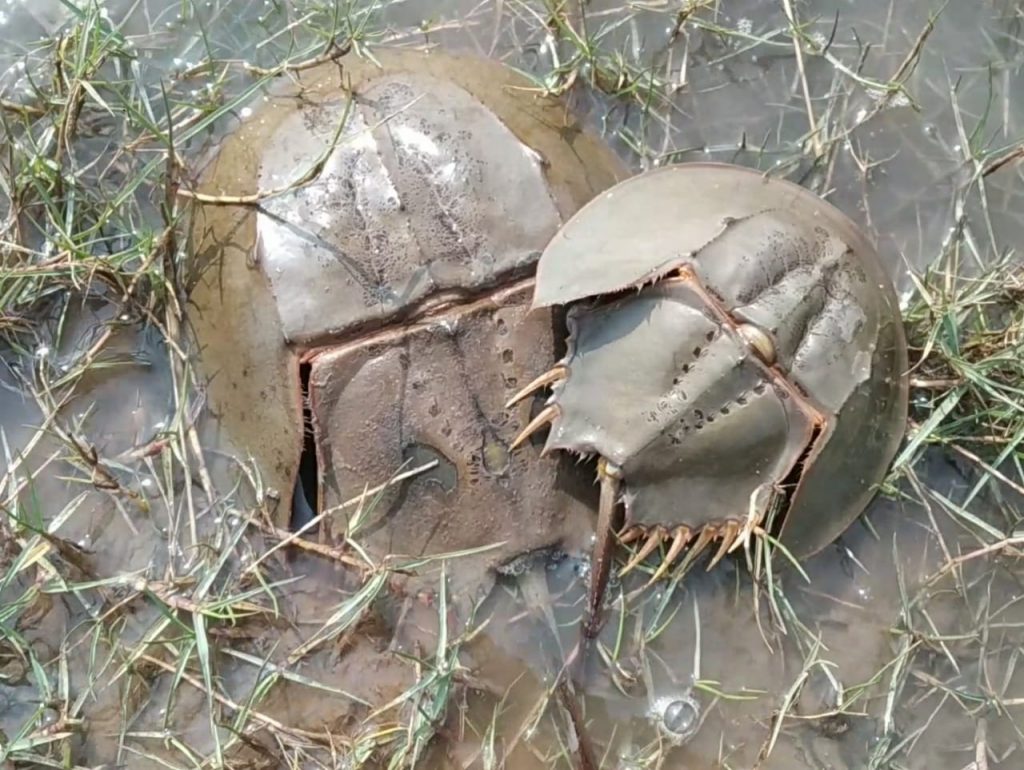Mahakalapara: Horseshoe crabs, a rare marine creature, have started swimming ashore from deep sea to Gahirmatha marine sanctuary in Kendrapara district with the start of their breeding season. The horseshoe crabs having a hard exoskeleton and 10 legs find the Pacific coast and the Odisha coast of Bay of Bengal most habitable. So they migrate to these destinations in large hordes for mating and nesting. The mating season of horseshoe crabs starts in January and concludes in March. The state is home to two of four varieties of species that are found globally.
However, before they can reach the coast for mating, these crabs get entangled in the fishing nets of fishermen in trawlers and die prematurely. These crabs play an important role in maintaining biodiversity and the marine environment for which they have been included as ‘Living Fossils’ in the fourth schedule of the IUCN Red List. The blood of these crabs contains copper and a chemical called hemicianin for which its color looks blue instead of red and thus draws its name as ‘Nila Rakta Kankada’ in Odia parlance.
Horseshoe crabs’ blood contains a chemical that makes its blood clot in the presence of even the slightest trace of bacteria. That is why many biomedical companies throughout the globe use blood to make vaccines making it as costly as Rs 11 lakh per liter in the international market. When horseshoe crabs sight an enemy, they attack it with its spiked tail called ‘telson’ and release a toxic fluid that causes pain and burn in the body. They swim in hordes toward the coast at the start of their nesting season.
As the mating season starts, they can be found coupled together and mating on a swampy sand bed of the Gahirmatha marine sanctuary. Their mating mostly takes place on the full moon day and the new moon day. The male crabs are smaller in size while their female counterparts are larger than the males. These rare crabs can be seen on the sand bed of Hukitola island, Lunchghola and Becon Point on the Mahanadi river basin adjoining the sea.
Environmentalist Samarendra Mahali said it has become pertinent to conserve these rare marine creatures. Efforts have been launched to protect these rare species and local fishermen are being sensitised about the value and importance of this creature. A local intelligentsia Subhash Swain said, “Nearly three decades back, the horseshoe crabs used to be found in large numbers across the coast but now their presence is limited to only some smaller pockets in Kendrapara district.” Their population is rapidly declining after 1971, and 1982 cyclonic storms and the 1999 Super Cyclone, he said.
Climate change and waste discharged into the sea by industrial plants have also impacted their population. He said there should be a joint effort by the government, private establishments, and forest departments to protect these rare species. When contacted, Gahirmatha forest ranger Manas Kumar Das said that the blood of these crabs is highly priced in the international market as it has medicinal value. They can be seen in large numbers in Gahirmatha for which efforts are being made to protect these rare species.
